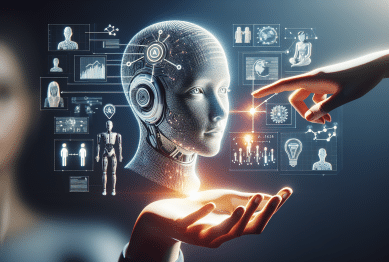Quantum computing isn’t just a buzzword—it’s changing the future of science and technology. This guide explores the basics, major breakthroughs, current limits, and what this emerging tech could mean for you and the world in the years ahead.
What Sets Quantum Computing Apart
Quantum computing works with qubits, not traditional computer bits. A qubit can represent a 0, a 1, or both at the same time. This superposition property means a quantum computer can process complex calculations much faster than classical computers. Unlike the binary systems people use daily, quantum technology takes advantage of phenomena like entanglement, unlocking new speeds and problem-solving abilities that were previously out of reach for digital systems. Scientists worldwide are racing to push this frontier further, and the sheer excitement in the tech world continues to build as practical experiments give way to real-world results (Source: https://www.nist.gov/quantum-information).
Quantum computers leverage other unique effects too. Entanglement ties the states of two qubits together, so changing one affects the other instantly, even at a distance. This phenomenon allows for efficient algorithms, such as those used in quantum cryptography and quantum machine learning, to operate exponentially faster or with increased security compared to classical approaches. The result? Challenges once considered impossible—like simulating protein folding or optimizing large logistics networks—are now in the realm of possibility (Source: https://www.ibm.com/quantum-computing/).
As big tech companies and startups invest in quantum research, the foundational theories are rapidly shifting from labs to industry. These efforts are supported by major institutions like universities and national labs. Although there is still much to uncover, the key difference between quantum and classical computing is now widely recognized: quantum’s multi-state processing power gives it a unique edge for certain classes of problems. In time, this could mean significant advancements across fields like cybersecurity, medicine, and economics.
Understanding Quantum Algorithms and Their Power
Quantum algorithms harness quantum effects to outperform standard approaches. Famous examples include Shor’s algorithm for breaking widely-used encryption and Grover’s algorithm for searching large databases more efficiently. While these algorithms require powerful and stable quantum hardware, they highlight the disruptive potential encoded in quantum logic gates and error-correction techniques. The theory is compelling: if sufficiently large and reliable quantum computers become available, traditional cryptography and security models will need to adapt (Source: https://www.nature.com/articles/d41586-021-03049-2).
Another captivating area of quantum algorithm research is quantum simulation. By harnessing entangled qubits, these systems can replicate atomic and subatomic processes, providing unparalleled insights into chemistry and physics. Imagine accurately modeling complex molecules, predicting reactions, and discovering new materials at a scale unthinkable for current supercomputers. These abilities have major implications for drug development, battery technology, and material science—every facet of the modern world stands to benefit.
Quantum machine learning is emerging as a promising field as well. Integrating the probabilistic power of quantum systems with artificial intelligence frameworks creates opportunities for speeding up training, discovering more efficient models, and handling truly massive data streams. While the potential is vast, it’s also clear that researchers and technologists must rethink established processes and architectures to fully leverage the new paradigm. This scientific transition, although gradual, marks a critical moment for innovators and learners alike.
Where Quantum Computing Is Now
Most modern quantum computers are still in the early stages. They’re often described as being in the Noisy Intermediate-Scale Quantum (NISQ) era. That means today’s machines have enough qubits to be interesting, but not quite enough for robust, error-free results. Noise, or random errors, is an ongoing challenge. Still, researchers are making steady progress improving quantum error correction and coherence times (Source: https://www.scientificamerican.com/article/what-is-a-quantum-computer/).
Hardware prototypes from leading organizations, such as IBM, Google, and universities, continue to break boundaries. Recent demonstrations of quantum supremacy—where a quantum computer solves a problem no classical machine can tackle efficiently—confirmed that the technology’s breakthrough moment is closer than ever. Industry collaborations and cloud-based quantum computing services also mean that researchers, businesses, and even students can access quantum chips remotely to run experiments and test algorithms without owning expensive hardware (Source: https://cloud.google.com/quantum-computing).
The ecosystem is growing quickly as a result. A wide range of open-source projects, online tutorials, and quantum programming languages have emerged, making it easier to learn about and work with quantum processors. While there are still speed and scale limitations, the pace of development suggests quantum computers will become increasingly central to the world’s digital infrastructure. Enthusiasts, educators, and enterprise leaders are watching closely to see how capabilities evolve.
Potential Impacts Across Industries
Industries are already experimenting with quantum computing’s potential for solving previously unsolvable problems. In drug discovery, quantum models simulate molecular structures and interactions more precisely, cutting down the time needed for new pharmaceutical development. Logistics and supply chain managers use quantum optimization to streamline routes and schedules, minimizing costs and boosting efficiency. Even the automotive and energy sectors foresee major shifts, with advances in battery technology and sustainable chemical processes on the horizon (Source: https://www.mckinsey.com/industries/technology-media-and-telecommunications/our-insights/quantum-technology).
Finance companies are taking quantum computing seriously too. Algorithms designed for portfolio optimization, risk analysis, and fraud detection could see exponential speed improvements. This would enable financial institutions to analyze more data in less time, potentially revolutionizing how markets function and how risk is managed. The same disruptive effect is expected in artificial intelligence, where faster quantum processors enable more complex analyses and predictions than classical hardware can manage.
Another key application area is in cybersecurity. Because some quantum algorithms can compromise current encryption standards, a push for quantum-resistant security solutions is already underway. Techniques like quantum key distribution (QKD) promise greater protection for sensitive communications, benefitting governments, corporations, and individuals alike. As new solutions emerge, every digitally connected sector stands to be affected by advances in this field.
Current Challenges and Moving Forward
There are real hurdles on the road to practical quantum computing. Maintaining stable qubits requires extremely cold operating temperatures, special magnetic shielding, and advanced engineering. Decoherence—the tendency of qubits to lose their quantum state due to environmental interference—limits computation time. Addressing these technical issues is the central focus of today’s leading research labs (Source: https://quantum.gov/about-quantum-information-science/).
The skills gap presents another significant obstacle. Few professionals possess hands-on experience or deep knowledge of quantum theory, programming, and engineering principles. Universities and companies are racing to develop educational resources, scholarships, and learning platforms aimed at training future quantum engineers and scientists. Programs like online quantum computing courses, open-source simulators, and collaborative research initiatives are helping broaden participation in the field.
It’s also important to manage expectations. While some breakthroughs have grabbed headlines, quantum computing is unlikely to replace classical systems for everyday tasks anytime soon. The power of quantum processors lies in handling very specific problems, like complex simulations or encryption, rather than general computing tasks. Progress will be incremental but steady, with each technological leap offering new possibilities—and lessons—for industry leaders, researchers, and curious learners.
How Quantum Computing Could Affect Your Daily Life
Quantum computing’s headline breakthroughs may sound distant or technical, but their ripple effects could touch daily routines in surprising ways. Imagine faster drug discovery leading to lifesaving treatments, or new battery materials making electric vehicles more accessible and efficient. Consumers may someday benefit from robust cybersecurity, seamless online experiences, and digital tools that grow smarter thanks to quantum-powered artificial intelligence.
As companies adopt quantum-enabled services, innovations will gradually find their way into mainstream products and platforms. Many experts believe that efforts to develop user-friendly quantum software and integrate quantum algorithms into everyday workflows will shape the next generation of business and technology leaders. Early education—through camps, online modules, and science centers—will spark curiosity among young students who might someday specialize in this emerging field.
For most people, quantum computing will remain mostly behind the scenes. Yet, its long-term promise ensures that more aspects of life—health, security, transportation, and commerce—will enjoy the benefits arising from these quantum breakthroughs. Those following the field closely can expect to see exciting developments soon, as the science of the incredibly small begins to reshape the incredibly complex world everyone inhabits.
References
1. National Institute of Standards and Technology. (n.d.). Quantum Information Science. Retrieved from https://www.nist.gov/quantum-information
2. IBM. (n.d.). Quantum Computing. Retrieved from https://www.ibm.com/quantum-computing/
3. Nature. (2021). How close is quantum computing to reality? Retrieved from https://www.nature.com/articles/d41586-021-03049-2
4. Scientific American. (n.d.). What Is a Quantum Computer? Retrieved from https://www.scientificamerican.com/article/what-is-a-quantum-computer/
5. Google Cloud. (n.d.). Quantum Computing. Retrieved from https://cloud.google.com/quantum-computing
6. Quantum.gov. (n.d.). About Quantum Information Science. Retrieved from https://quantum.gov/about-quantum-information-science/









